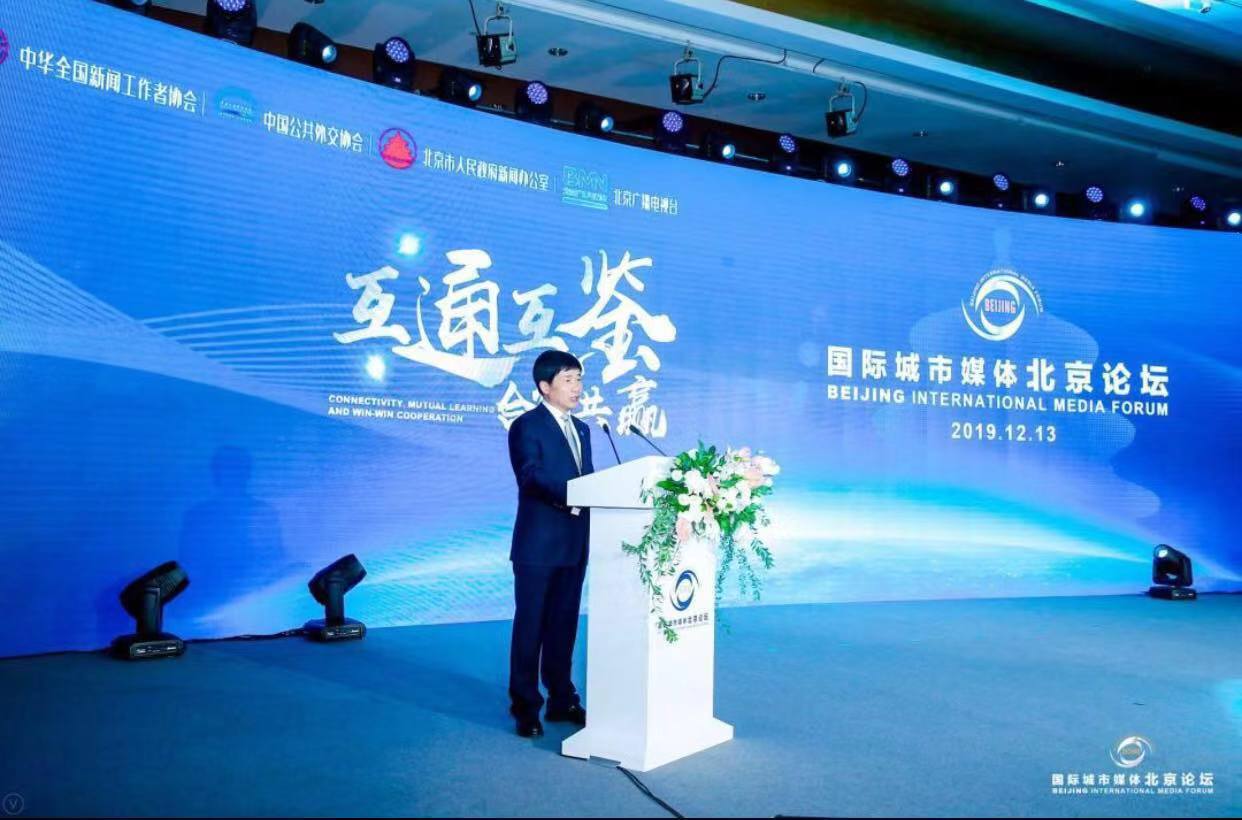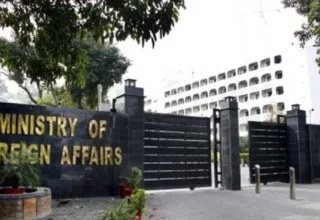
· 2019 Beijing International Media Forum Concludes with joint communique
BEIJING, China – Top media organisations from 12 friendly countries have agreed on a joint initiative on media cooperation and collaboration between international cities to promote in-depth communication and win-win cooperation.
The agreement was reached on the concluding day of 2019 Beijing International Media Forum & Tour held here from December 9-13 at Beijing, China, under the theme of “Connectivity, Mutual Learning, and Win-Win Cooperation”.

Around 150 journalists including 14 senior executives representing media organizations from 12 countries in four continents to Beijing for the event attended the forum. The event was co-hosted by the All China Journalists Association, China Public Diplomacy Association, Beijing Municipal Information Office and Beijing Media Network.
Journalists and executives from Brazil, Cuba, Ethiopia, Iran, Japan, Laos, Nepal, Pakistan, Russia, Turkey, Ukraine, and Vietnam attended the forum. These overseas media representatives also did a four day tour in Beijing prior to the forum. They visited places such as Shougang Park, BAIC Motor Electric Vehicle Company, and Beijing Rail Transit Command Center.
Talking to DiploMag Magazine, Du Feijin, head of the Publicity Department of the Beijing Committee of the Communist Party of China, said that the forum served as a platform dedicated to promoting lasting friendship among international cities.
“The media is encouraged to be the disseminator of friendly exchanges by international cities and a promoter of win-win cooperation,” he added. Du hoped that media from Beijing and international cities will strengthen cooperation and exchanges and tell good stories about cities. He also emphasized than the media will focus on building, sharing, and creating a better future for the city, as well as promoting the building of a community with a Shared future for mankind.
Many participants agreed that Beijing International Media Forum is a constructive platform for more in-depth exchange and greater understanding. In the opening ceremony, Beijing Media Network also signed cooperation agreements with Ethiopian news agency, Nepal National News Agency (RSS); and Aydinlik from Turkey to establish long-term cooperative partnerships.
The event consisted of one main forum and two sub-forums. With the topic “Connectivity, Mutual Learning and Win-Win Cooperation”, representatives from six domestic and international media organizations and a media expert made speeches in the main forum.

The topics of the sub-forums were “Media cooperation and international communication against the backdrop of globalization” and “Technology transformation and media trends”. Some media experts and representatives of Chinese and foreign media made speeches on these two topics. The attendees thought the Beijing International Media Forum is a good platform to communicate with counterparts from different countries.
During their visit to the Beijing Planning Exhibition Hall, the participants were briefed about Beijing’s past, present and future. They were also introduced the city’s overall planning scheme as well as the coordinated development of the Beijing-Tianjin-Hebei region. The delegation learnt the profound history and development achievements of Beijing in various forms.
On the third floor of the exhibition hall, with the technical demonstration of sound and light, they were able to see all of Beijing’s landmark buildings at a glance in the urban planning model. It gave the journalists a bird’s eye view of Beijing.
By 2050, Beijing will have been established as a world-class, harmonious and livable capital. Meanwhile, the Beijing-Tianjin Hebei region will achieve high-level coordinated development as well.
Later, the delegates visited the China Railway Museum where they learnt about the development history of the Chinese railway. Using a large number of vivid pictures, dioramas and train models, the museum fully demonstrates the rapid development of China’s railway. The foreign reporters walked into the exhibition hall, looking at precious old historical photos and train models of different eras, as if they had travelled 140 years through time.
In the museum, one of the most attractive exhibits is the simulated high-speed railway cab. Guests were able to imagine themselves as high-speed railway drivers, driving high-speed trains on the Beijing-Tianjin railway.
The guests were very excited to experience the feeling of high-speed rail travel. Many foreign reporters praised “China’s speed” and often said “Bravo!” Today, China’s high-speed railway enjoys a global reputation, and it has become a “Chinese business card” praised by the world.
In the afternoon, they visited Beijing Rail Transit Command Center to understand the role it plays in controlling the rail transit system of Beijing. The dispatch and command center covers an area of 2,600 square meters.
There are 13 giant display screens showing the operation of more than 20 lines of the Beijing subway in real time. Moving light spots on the screen represent the running trains, and scrolling data on the large screen show the operation status. According to onsite staff, Beijing is now the world’s longest urban rail transit network.
Opendra Sharma from National News Agency of Nepal said that through this visit, he had gained a profound understanding of the history and development of Beijing.
“The visit was really wonderful. I was deeply impressed by China’s history, culture, development achievements and the hospitality of the people”.
Brazilian reporter Cristiano Dias Vieira said that through the visit, he came to know not only what Beijing looks like today, but also what it will become tomorrow.
“I am impressed that Beijing’ metro network has grown to such a large scale within just 50 years. Beijing’s urban planning is a good example for China, Brazil and even the whole world to learn from. Brazil and China can communicate and cooperate in many ways, and there can be a better future between the two countries,” he concluded.








